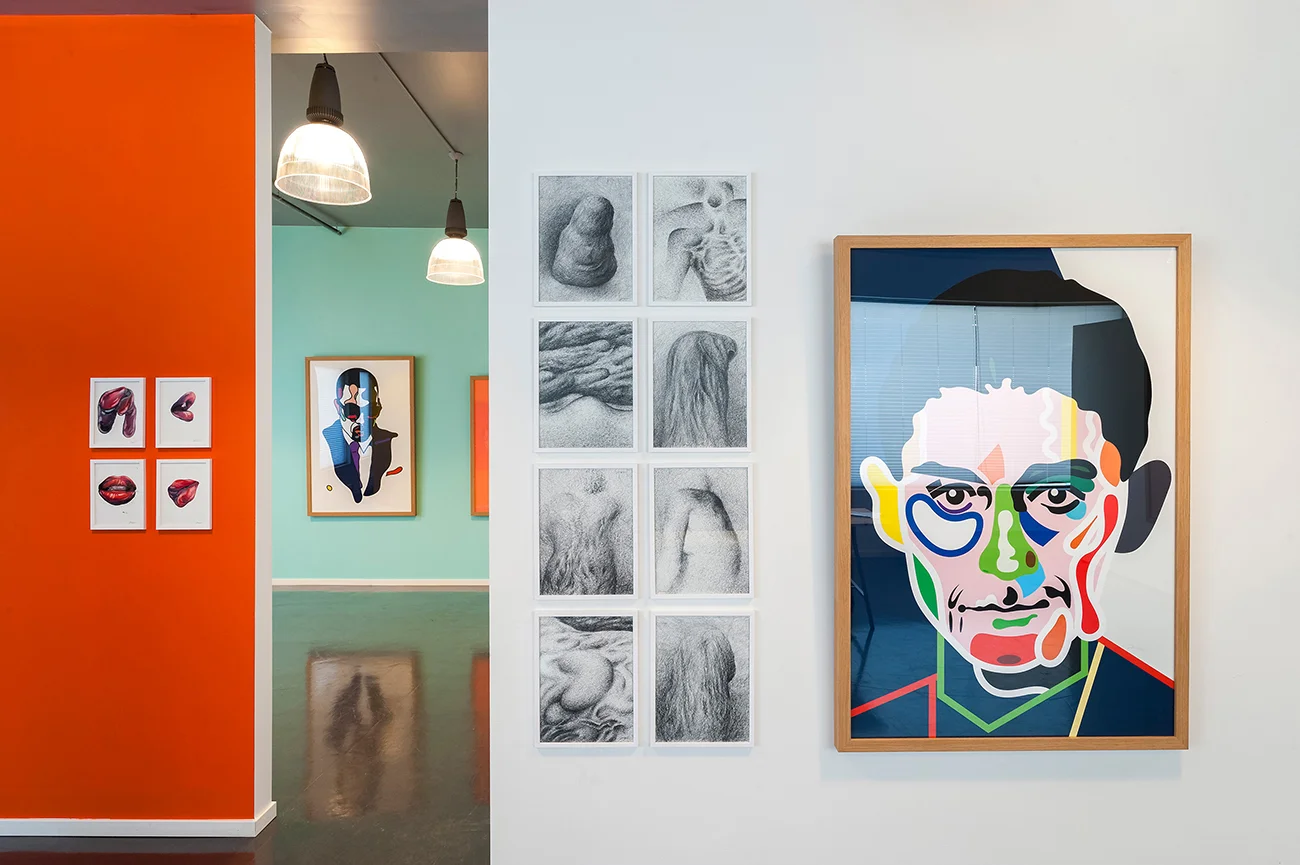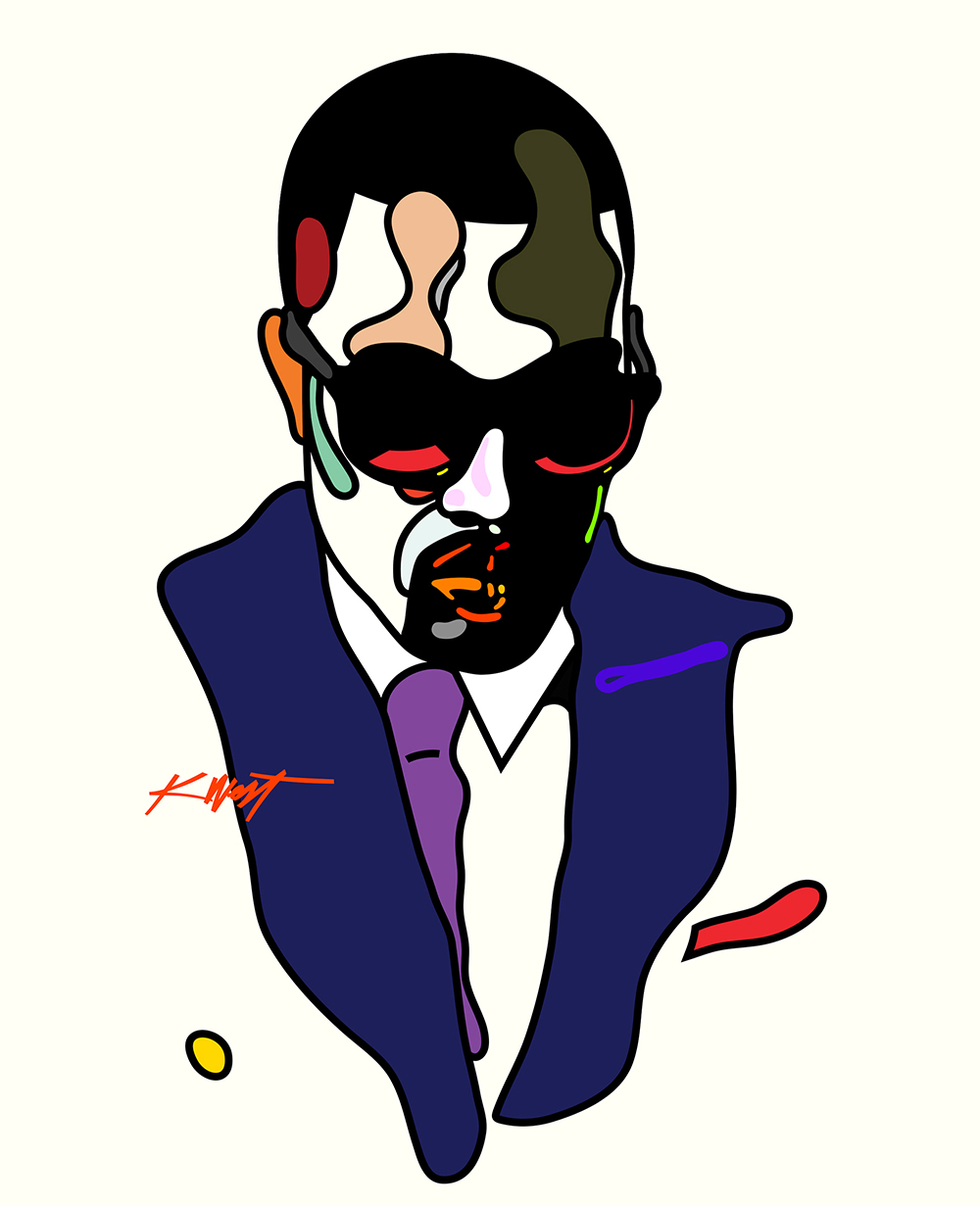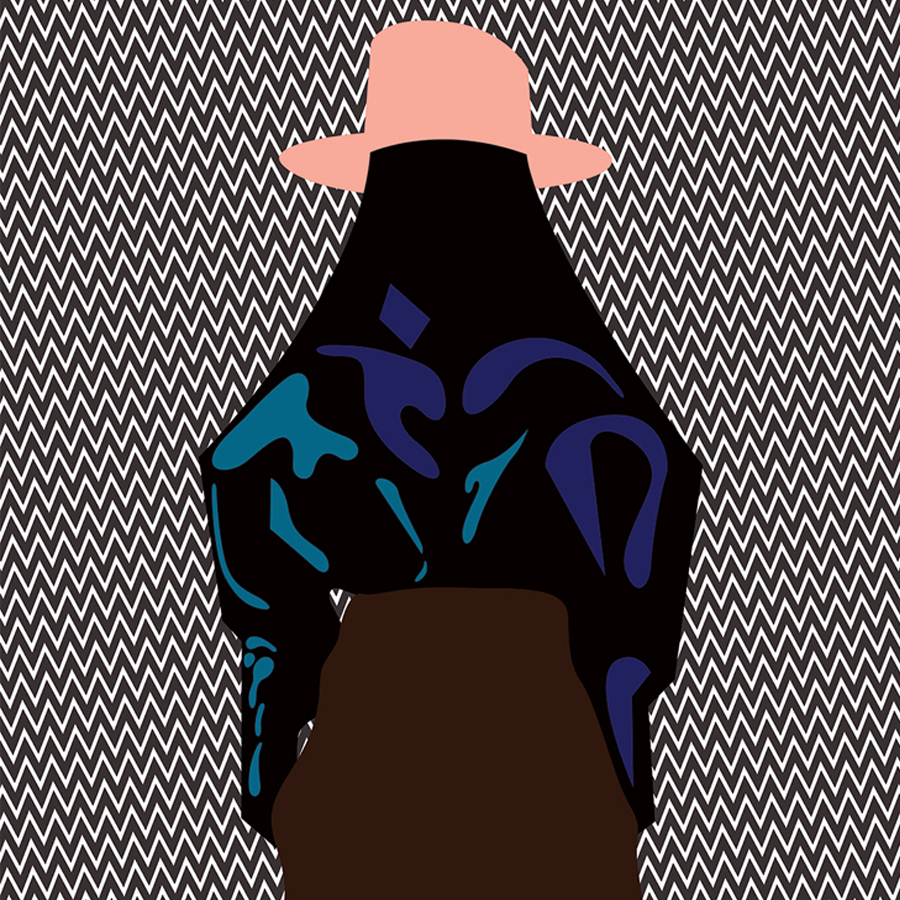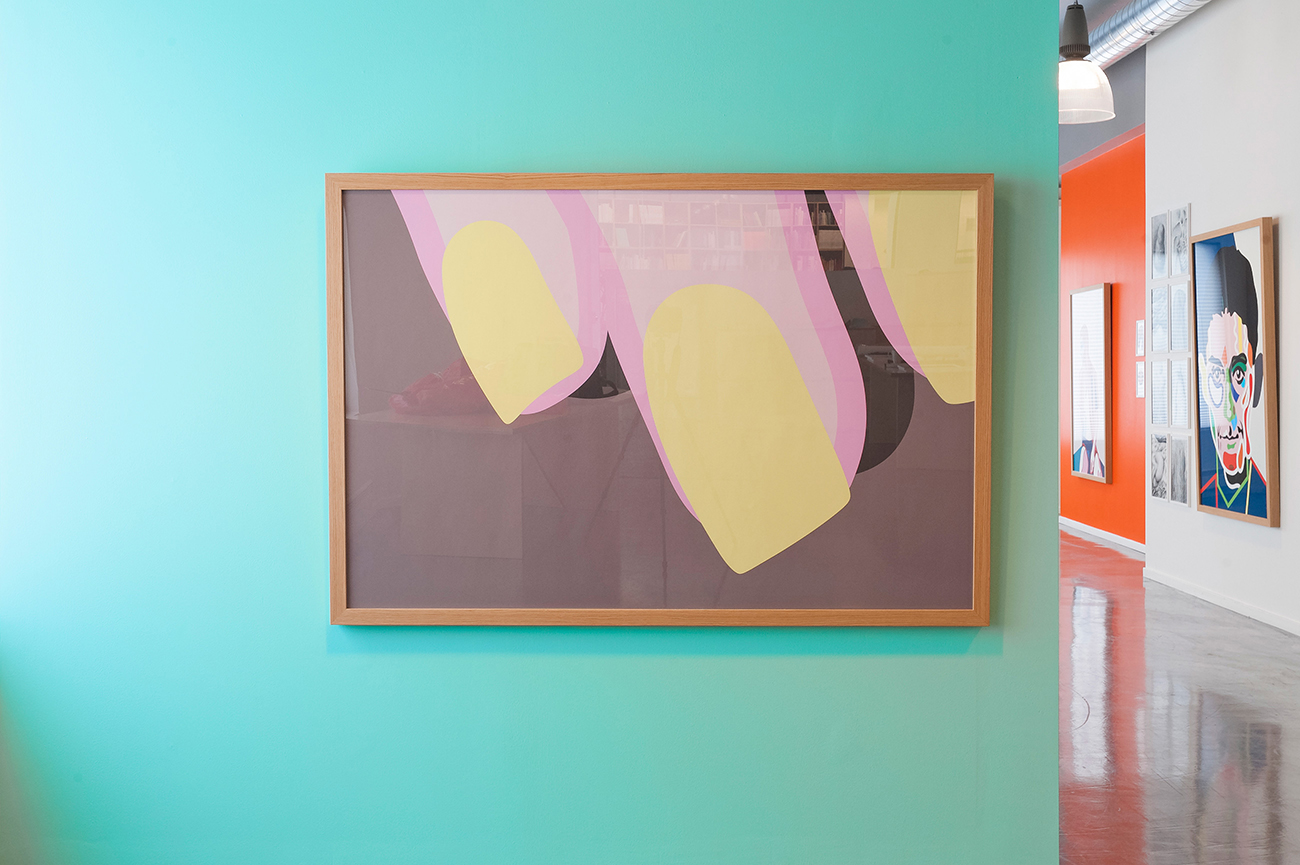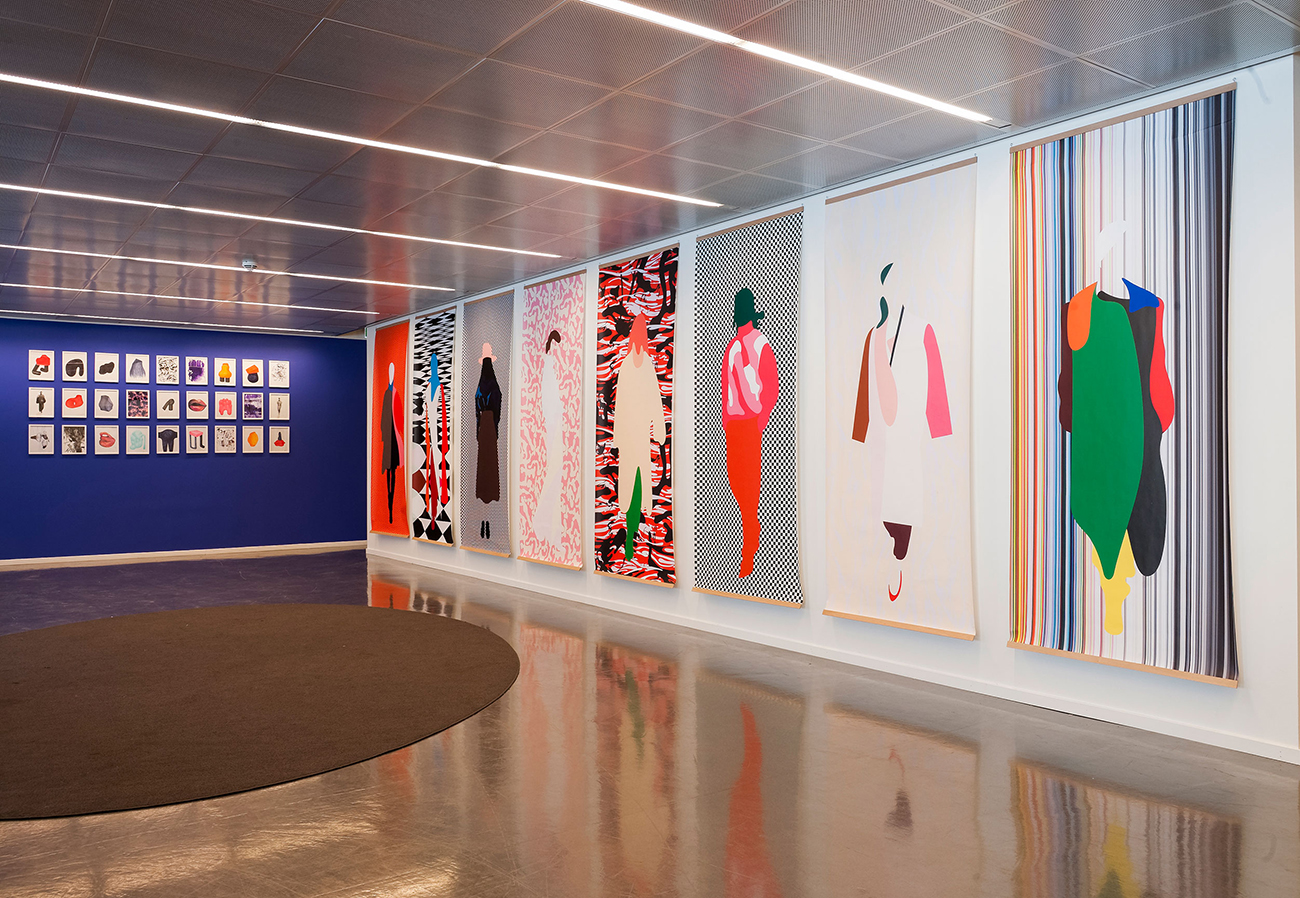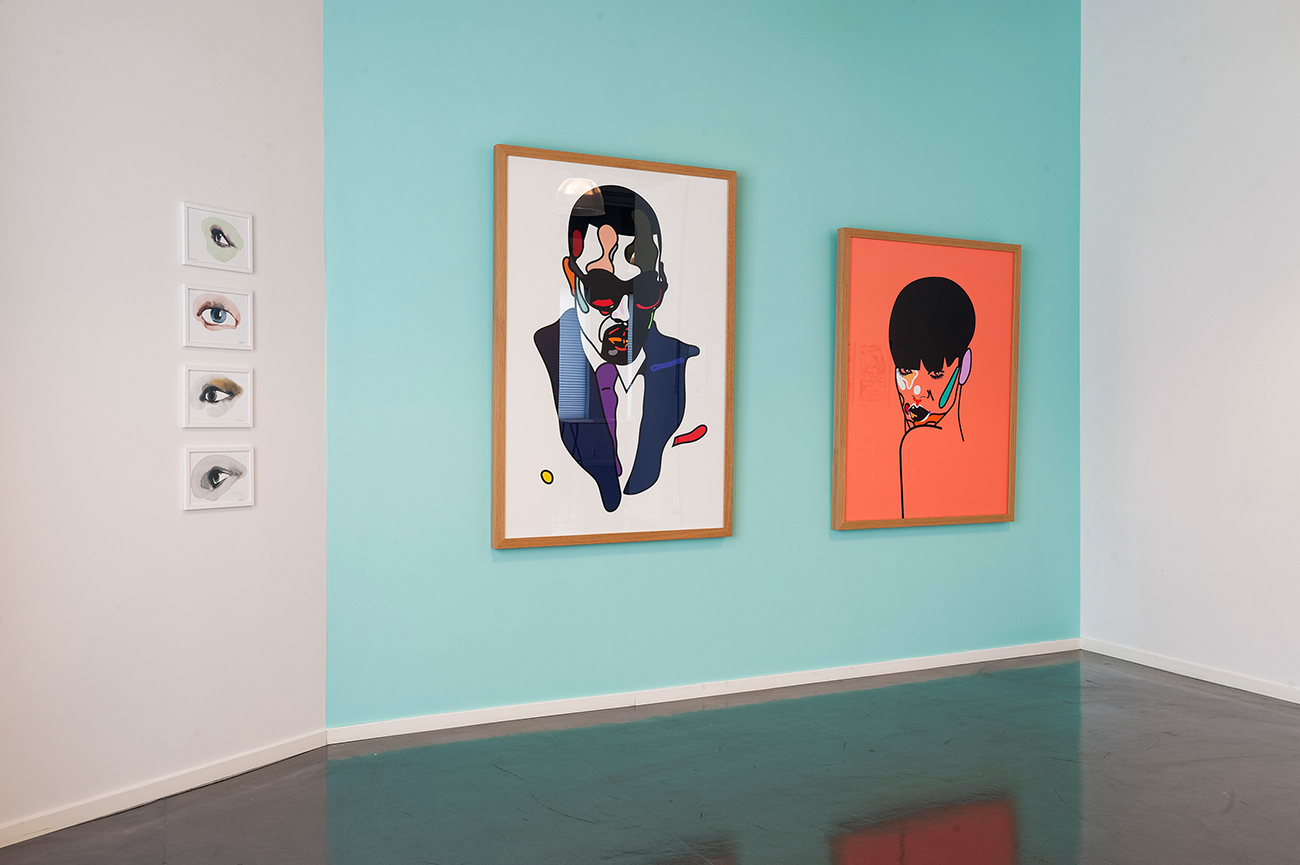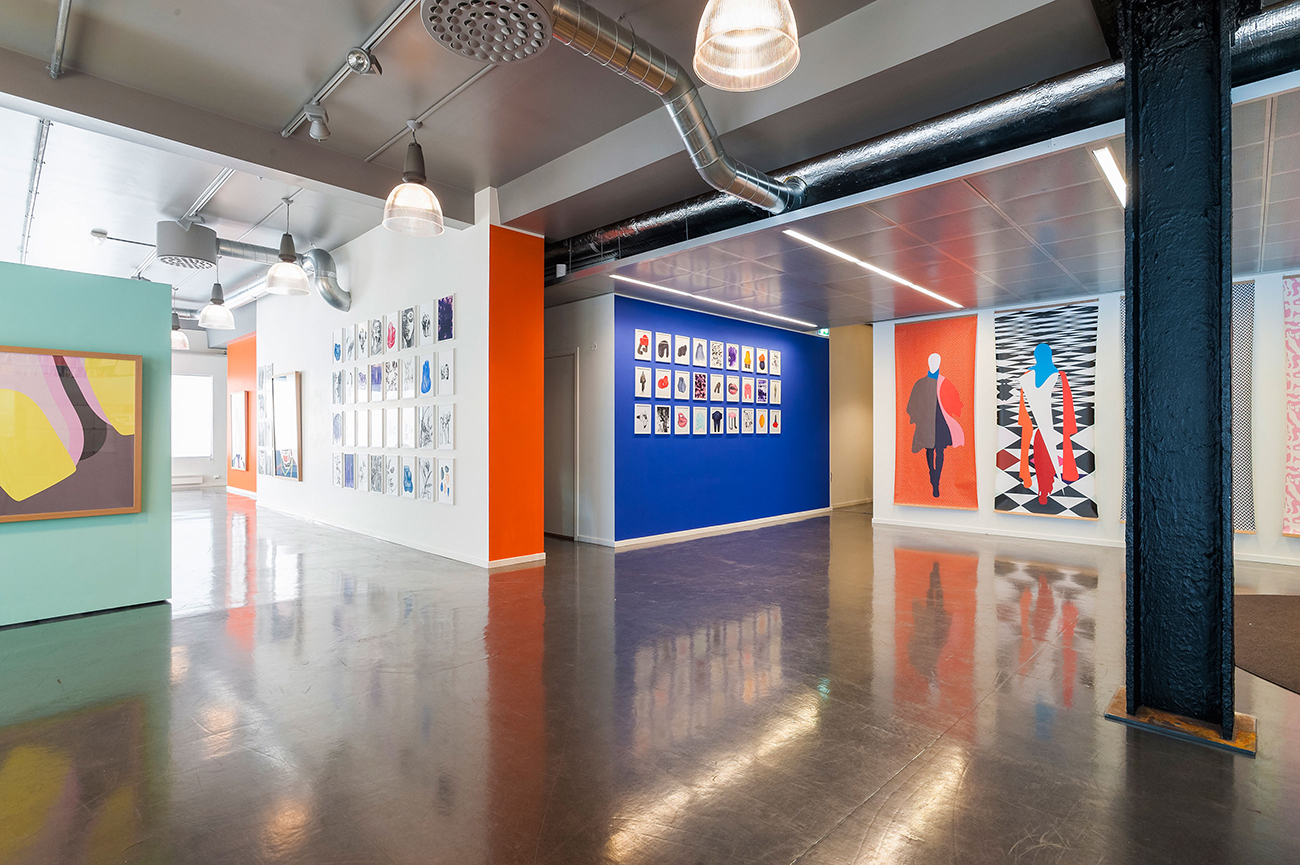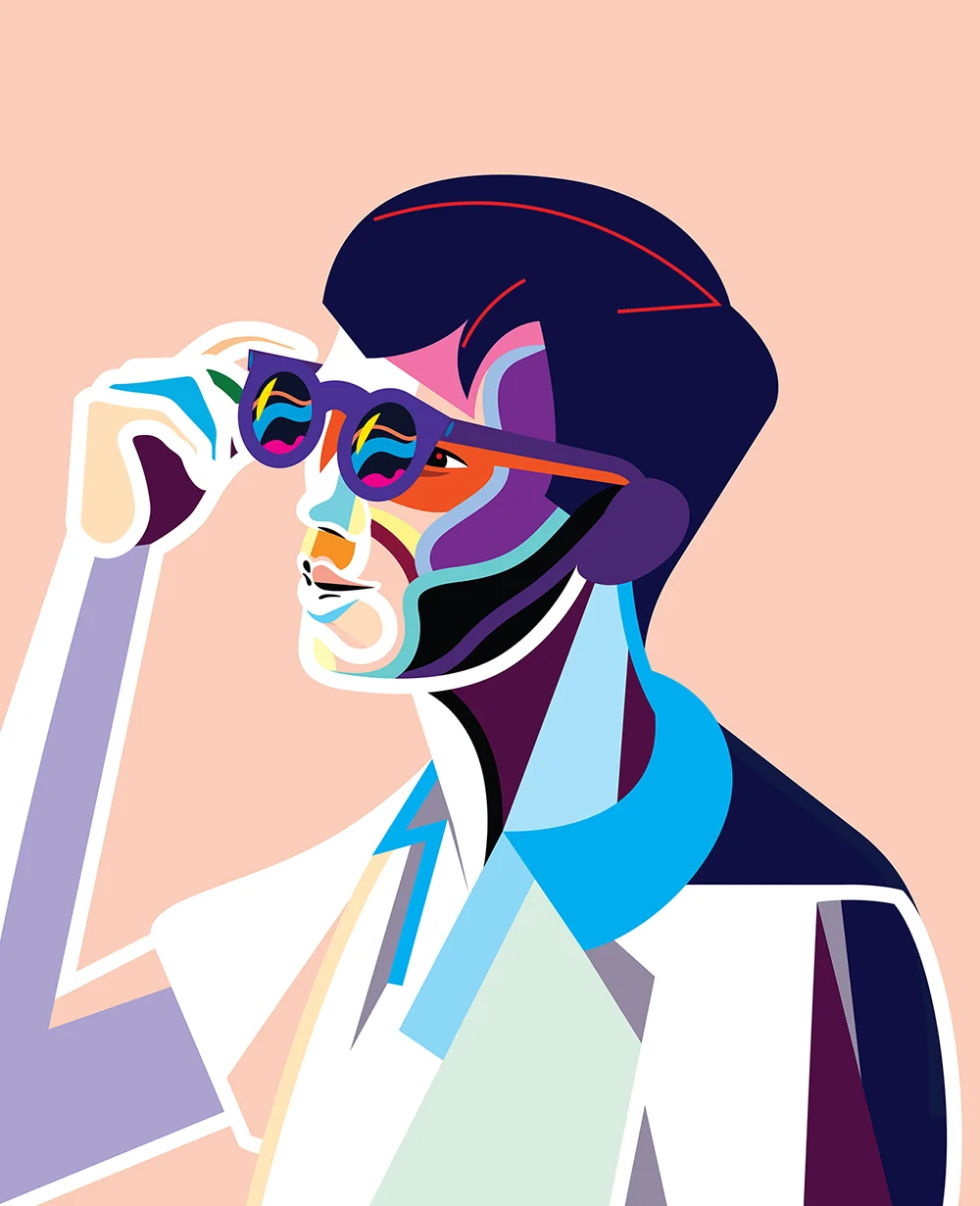Up to Pace with MVM: An Interview with Norwegian Designer Magnus Voll Mathiassen
/Graphic Designer and Illustrator Magnus Voll Mathiassen is invariably drawn back to the land, to the vital relationship between himself and the surrounding Nordic landscape. He describes his work through the symbol of a prized teak bowl, kidney-shaped, and spotted at a flea market. Nothing special, he describes, merely “a basic shape that has been given a little twist to give it character.” Behind this understated aesthetic is a man who has in the past decade co-founded a successful design firm, then started his own practice, worked with clients including Bose, Adidas, Microsoft, and MTV Nordic, garnered fame for his boldly stylized portraits, and was featured in a retrospective exhibition in Oslo in 2014. Between the pace of high-profile projects (he’s represented by agents in the US, Norway, France, Finland & The Netherlands) and his personal work, sometimes Magnus simply seeks time in the woods for meditation and exploration . . . and a good breakfast.
Magnus’ recent style reflects his impulse for exploration and “rapid evolution,” turning to such forms as ink drawing (the same bold lines remain and themselves create vitality without color), artistic studies such as The Walking Rodin, and sculpture. While the familiar essence of his portraits of hip-hop artists and celebrities, and the abstract forms and imagery of nature endures, the newest evolution is a bold distillate of sharp highlights and thick lines across concentrated hues. Take The Walking Rodin, for instance, whose cognitive illusion draws us to infer a face (or faces) along the torso . . . or waist, or elsewhere amongst the richly-outlined colors and shapes which compose the figure. Visual complexity is added, outlines pop, and perspective is given using lighter tones for shadow. Mathiassen’s recent work reveals nuance - an artistic evolution - while providing a more immediate connection for the viewer with a perception of the world that illustrates the “sheer ugliness and joy that exists side by side.”
Magnus spoke to KNSTRCT about his favorite design practices, what gets him going in the morning, and the importance of constant exploration as an artist.
“ You create “mistakes” that you often want to explore further . . . call it mutations. Rapid evolution.”
K: Favorite tools to design with?
MVM: Whenever I have a project where I need to use cutting board, knife, paper, and my hands, I truly enjoy that. Everything physical. Any tool that gives me some time off from the computer is truly appreciated. The computer isn’t my favourite one, but unfortunately like for everyone else, it’s become an extra limb you can’t function without.
K: Where’s your favorite place to think or be inspired?
MVM: Definitely the woods. I spend time in the woods running or skiing all year around, and it is pure contemplation. Nature inspires and functions as meditation. It’s a bit addictive.
K: What would people be surprised to learn about you?
MVM: I have a pop music quiz team called Rocksteady Strømsø. On another note, do people get surprised these days? Thought people were pretty phased by living with internet for some time now!
K: What is on your perennial to-do list?
MVM: Breakfast. Without breakfast I am really not able to do any of my to-do list. Other than that, trying to explore. Explore anything outside my profession, trying to figure a way to expand beyond what I am doing now.
K: Can you describe your path to becoming the artist & designer you are today?
MVM: Set a goal, both creatively and economically. Don’t be shy - think big, have a strategy, follow the plan, never give up, work harder than you have ever done before, and be sure to enjoy life on the way as well. Every moment with family and friends is important, just as important as your way to whatever your goal is. Also, carve out a niche for yourself in the industry. Don’t try to blend in, do the opposite. That has been my recipe.
K: How would you describe the design aesthetic of the MVM Studio?
MVM: Probably colorful and bold, and at times minimal. Fun and serious, dark and light.
K: What about in one word?
MVM: Non-Nordic.
K: You started Grandpeople, your first studio, in 2005 right out of graduate school. What lessons did you take from Grandpeople, and what prompted the move to start anew?
MVM: That sometimes it’s time to move on, be it personal or creative reasons. Everyone is different. With me, I tend to get bored and am often looking for new things to do. Working as a studio means that the projects are a collaborative thing; it puts the ego aside and the future pathway is more or less a fixed one. I need to have the ability to be flexible, and that’s one of the reasons I started my own practice.
K: Can you describe what the process is like working on a project with an international brand like Microsoft or Nike?
MVM: The process, to me at least, is like any normal process; the only difference is that you need to execute the work twice as fast. This suits me very well, I love the pace.
K: What is the most difficult part of that process?
MVM: To keep an eye on details. Details are very important to me as my work is constructed in a way that - to me at least - if something is a bit off, you see it clearly.
K: Who are some of the illustrators and designers who are really influencing and inspiring you currently?
MVM: Aesthetically and conceptually there isn’t really anyone. But regarding work ethics and the sheer love for the profession and what they do, there are plenty! Design normally doesn’t inspire me. People do.
K: Who are some of the past artists and creators that inspire you?
MVM: Tons of American modern abstract expressionists. And Jean Arp. Eames. Bernini. Too many to name.
K: What fascinates you about the world (what captures your attention, what intrigues you to explore)?
MVM: The sheer ugliness and joy that exists side by side.
K: What troubles you about the world?
MVM: Again, it is the sheer ugliness and joy that exists side by side.
K: What is the biggest misconception people have about illustrators?
MVM: If you mean people in the creative profession, some might think that illustrators are romantics who are not good with schedules and just like to work and doodle and whatnot. That’s my impression. Nothing wrong with that . . . though I’m not exactly like that.
K: Talk to us about what's next for you. Do you have any special projects on the horizon?
MVM: I’m working on some types of sculptures that work purely as decoration. Some that are a crossover between lamps and sculptures, and some that are like mobiles or stabiles. Module-based. I just need some help manufacturing them!
K: What initially captures your attention for a potential subject? Or is it more a result of collaborations and commissions in which you find your inspiration within the parameters of the project?
MVM: As with any commissions from clients, the subject is not something you have chosen. But, and this is a good thing, they have already made some decisions for you: the timeline and style among other things. Because of this, your attention becomes extremely focused. And normally the timeline is a tight one. This means that often the result will be good, but unexpected. It’s a good kind of surprise, as you create “mistakes” that you often want to explore further. You can call it mutations. Rapid evolution.
Magnus Voll Mathiassen


